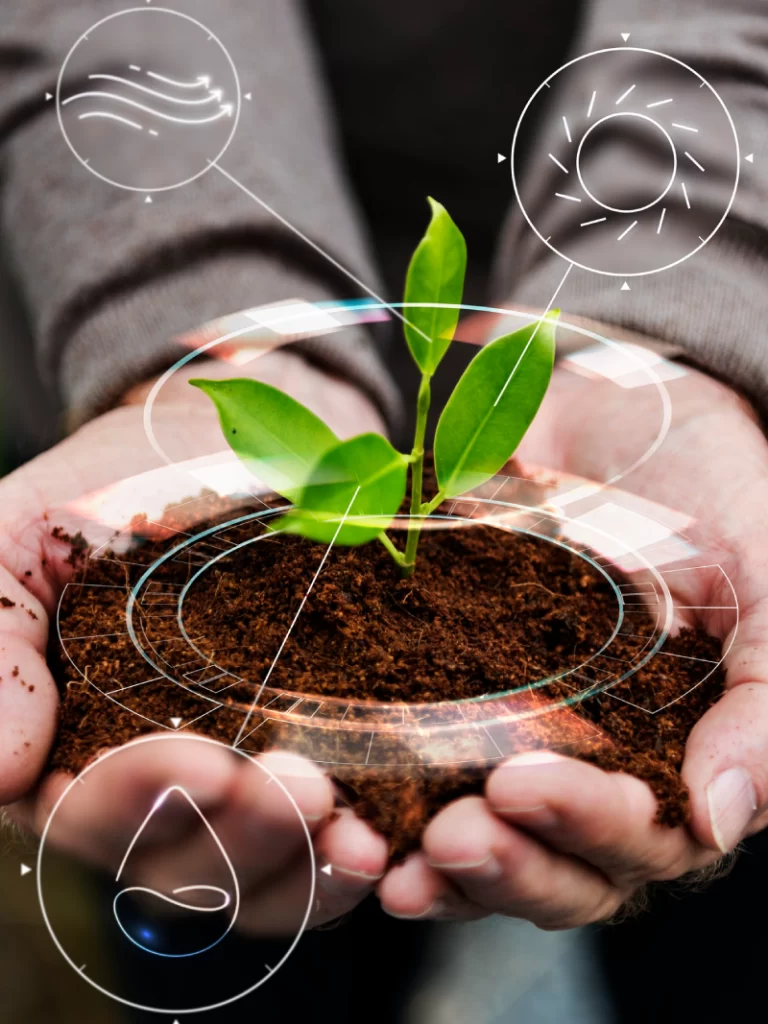The agritech industry faces distinct challenges that necessitate innovative solutions to enhance productivity, sustainability, and operational efficiency. Next-generation technologies such as Artificial Intelligence (AI), IoT sensors, Machine Learning (ML), automation, chatbots, and Large Language Models (LLMs) can address these challenges effectively. This article outlines the key challenges in the agritech industry, tailored IT solutions, and detailed case studies with cost-benefit analysis, including real-time data integration and analytics.
In-House Engineers
Customer Satisfaction
We Have Completed
Client’s Reviews
Key Challenges in the Agritech Industry
- Crop Yield Optimization
- Resource Management
- Pest and Disease Control
- Supply Chain Efficiency
- Environmental Sustainability
- Farmer Support and Engagement
Tailored IT Solutions
- AI and Machine Learning for Crop Yield Optimization
- IoT Sensors for Resource Management
- AI and ML for Pest and Disease Control
- Blockchain and IoT for Supply Chain Efficiency
- AI and ML for Environmental Sustainability
- Chatbots and LLMs for Farmer Support and Engagement

AI and Machine Learning for Crop Yield Optimization
Challenge
- Enhancing crop yields by analyzing various factors affecting plant growth.
Solution
- Implement AI and ML algorithms to analyze soil health, weather patterns, and crop health data to optimize yields.
Cost-Benefit Analysis
- Initial Cost: $1,500,000
- Annual Maintenance: $300,000
- Annual Savings: $1,200,000 (from increased yields and reduced input costs)
- ROI Period: 1.5 years
Case Study: Climate Corporation’s AI-Driven Yield Optimization
Implementation
- AI and ML models to analyze data and provide recommendations for optimizing crop yields.
Cost
- Initial setup cost of $1,500,000, with annual maintenance of $300,000.
Benefit
- Increased crop yields by 25%.
- Reduced use of fertilizers and pesticides by 20%.
- Enhanced overall farm productivity.
IoT Sensors for Resource Management
Challenge
- Efficiently managing water, fertilizers, and other resources.
Solution
- Deploy IoT sensors to monitor soil moisture, nutrient levels, and weather conditions in real-time.
Cost-Benefit Analysis
- Initial Cost: $1,000,000
- Annual Maintenance: $200,000
- Annual Savings: $900,000 (from reduced water and fertilizer usage)
- ROI Period: 1.5 years
Case Study: John Deere’s IoT-Enabled Resource Management System
Implementation
- IoT sensors for real-time monitoring of soil and weather conditions.
Cost
- Initial setup cost of $1,000,000, with annual maintenance of $200,000.
Benefit
- Reduced water usage by 30%.
- Increased efficiency of fertilizer application by 25%.
- Enhanced resource management and sustainability.
AI and ML for Pest and Disease Control
Challenge
- Identifying and controlling pests and diseases effectively.
Solution
- Use AI and ML to analyze data from IoT sensors and satellite imagery to detect early signs of pests and diseases.
Cost-Benefit Analysis
- Initial Cost: $1,200,000
- Annual Maintenance: $240,000
- Annual Savings: 1,000,000 (from reduced crop losses and pesticide use)
- ROI Period: 1.5 years
Case Study: Bayer’s AI-Powered Pest and Disease Control
Implementation
- AI and ML models to analyze data and detect pests and diseases early.
Cost
- Initial setup cost of $1,200,000, with annual maintenance of $240,000.
Benefit
- Reduced crop losses due to pests and diseases by 30%.
- Minimized use of pesticides by 20%.
- Improved overall crop health.
Blockchain and IoT for Supply Chain Efficiency
Challenge
- Ensuring transparency and efficiency in the agricultural supply chain.
Solution
- Utilize blockchain for transparent tracking and IoT sensors for real-time monitoring of produce.
Cost-Benefit Analysis
- Initial Cost: $1,500,000
- Annual Maintenance: $300,000
- Annual Savings: $1,200,000 (from improved campaign performance)
- ROI Period: 1.5 years
Case Study: IBM Food Trust’s Blockchain-Based Supply Chain Management
Implementation
- Blockchain for tracking produce and IoT sensors for real-time monitoring.
Cost
- Initial setup cost of $1,500,000, with annual maintenance of $300,000.
Benefit
- Reduced supply chain losses by 25%.
- Improved traceability and quality control.
- Enhanced overall supply chain efficiency.
AI and ML for Environmental Sustainability
Challenge
- Reducing the environmental impact of agricultural practices.
Solution
- Use AI and ML to analyze and optimize farming practices to minimize environmental impact.
Cost-Benefit Analysis
- Initial Cost: $1,200,000
- Annual Maintenance: $240,000
- Annual Savings: $1,000,000 (from improved sustainability and reduced environmental impact)
- ROI Period: 1.5 years
Case Study: Syngenta’s AI-Powered Environmental Sustainability Platform
Implementation
- AI and ML models to analyze farming practices and optimize for sustainability.
Cost
- Initial setup cost of $1,200,000, with annual maintenance of $240,000.
Benefit
- Reduced carbon footprint by 20%.
- Improved soil health and biodiversity.
- Enhanced overall sustainability of farming operations.
Chatbots and LLMs for Farmer Support and Engagement
Challenge
- Providing efficient and personalized support to farmers.
Solution
- Develop chatbots and LLMs to handle farmer inquiries, provide farming advice, and assist with troubleshooting.
Cost-Benefit Analysis
- Initial Cost: $500,000
- Annual Maintenance: $100,000
- Annual Savings: $600,000 (from reduced support costs and improved farmer satisfaction)
- ROI Period: 1.5 years
Case Study: Farmers Business Network’s AI Chatbot for Farmer Support
Implementation
- AI-powered chatbot for farmer support and engagement.
Cost
- Initial setup cost of $500,000, with annual maintenance of $100,000.
Benefit
- Improved farmer satisfaction by 25%.
- Reduced support costs by 30%.
- Enhanced farmer interaction and support efficiency.
Conclusion
Integrating AI, IoT, ML, automation, chatbots, and LLMs in the agritech industry addresses critical challenges and opens up new opportunities for growth and efficiency. The detailed case studies and cost-benefit analyses demonstrate the significant potential of these technologies to enhance crop yield optimization, resource management, pest and disease control, supply chain efficiency, environmental sustainability, and farmer support. By leveraging these next-generation solutions, the agritech industry can become more resilient, efficient, and future-ready, ultimately leading to improved operational performance and farmer satisfaction.




